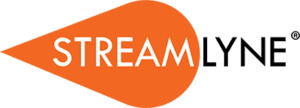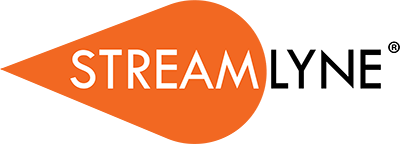
You’ve made the decision to invest in a grant software tool. You’ve convinced leadership, secured budget, and selected a platform. Now comes the critical question: how do you actually implement this tool in a way that drives adoption, delivers results, and justifies your investment? The difference between a successful grant software tool deployment and expensive shelfware often comes down to implementation strategy.
Research administrators and VPRs who have successfully deployed grant software tools share common approaches: they focus relentlessly on user value, they integrate the tool into existing workflows rather than creating new processes, and they measure and communicate results consistently. Here’s how to follow that proven path.
Before Launch: Laying the Groundwork for Success
Implementation success begins before your grant software tool even goes live. The groundwork you lay in the weeks before launch will determine whether researchers embrace or ignore the platform.
Start by identifying your institutional champions. These are the enthusiastic faculty members who are always looking for better ways to find funding, who adopt new technologies readily, and who have influence among their peers. Meet with these potential champions individually, demonstrate the grant software tool, and enlist them as early adopters who can provide testimonials and help other faculty get started.
Don’t neglect the change management communications aspect. Researchers need to understand not just that a new grant software tool exists, but why it matters for them personally. “We have a new grant database” generates yawns. “Find funding opportunities matched to your research that you’ve been missing” generates interest. Frame your communications around researcher benefits, not institutional processes.
Technical preparation matters too, even for cloud-based grant software tools. Work with your IT department to ensure single sign-on integration if possible, so researchers don’t face yet another username and password to remember. If your grant software tool offers API access, consider how it might integrate with other institutional systems like research information management platforms or faculty activity databases.
The Critical First 30 Days
The first month after launching your grant software tool will largely determine long-term success. This is when early adopters form opinions, when word-of-mouth begins spreading (positively or negatively), and when momentum either builds or stalls.
Schedule hands-on workshops during the first few weeks, but keep them focused and practical. Researchers don’t want to sit through hour-long feature tours. Instead, offer 30-minute sessions focused on specific use cases: “Find funding for your next postdoc,” “Discover hidden opportunities in your field,” or “Build collaborative teams for large grants.” Participants should leave each session having actually found opportunities relevant to their own work.
Make individual onboarding support readily available. Some researchers will want one-on-one help getting their profiles set up and understanding how the grant software tool can serve their specific needs. Research development staff time invested here pays enormous dividends in researcher satisfaction and long-term platform adoption.
Consider running a pilot program or challenge during the first month. For example, challenge faculty to each find three opportunities they weren’t previously aware of using the grant software tool. Offer small incentives (research development consultation time, proposal writing support, or even just public recognition) for participation. This creates early wins and positive stories to share.
Embedding the Grant Software Tool in Existing Workflows
The single biggest mistake in grant software tool implementation is treating it as a standalone activity separate from researchers’ normal work. People are busy and won’t add new steps to their routines unless the value is overwhelming. Instead, embed grant software tool use into processes that already exist.
If your institution holds regular grant proposal brainstorming sessions or pre-submission reviews, make grant software tool searches a standard part of those meetings. When researchers come to research development staff for consultation, use the grant software tool together during the conversation to identify opportunities in real-time.
Integration with communication platforms dramatically improves adoption. If your grant software tool can push opportunity alerts to Slack, Microsoft Teams, or email, researchers receive notifications in places they already check regularly. This passive awareness drives engagement far more effectively than expecting people to remember to log into another platform.
For research administrators, incorporate grant software tool intelligence into your regular communications. If you send out monthly funding opportunity newsletters, draw opportunities from the platform and explicitly credit it. When you proactively reach out to faculty about relevant funding, mention that you discovered it through your grant software tool. This demonstrates value and encourages researchers to explore the platform themselves.
Training That Actually Works
Most grant software tool training fails because it focuses on features rather than outcomes. Researchers don’t care about learning all the platform’s capabilities—they care about finding funding for their specific research.
Structure training around research domains and career stages, not platform features. Offer sessions like “Finding Funding for Early-Career Humanities Scholars” or “Large-Scale Collaborative Grants in Engineering.” Participants see immediately how the grant software tool applies to their situation.
Make training resources available on-demand and in multiple formats. Some researchers will want live workshops, others prefer written guides they can reference at their convenience, and still others learn best from short video tutorials. A comprehensive training library accommodates different learning styles and schedules.
Create discipline-specific quick-start guides that show researchers in particular fields exactly how to set up their profiles and begin finding relevant opportunities. A biologist and a historian will use your grant software tool differently—acknowledge that in your training materials.
Measuring What Matters
You can’t manage what don’t measure, and demonstrating grant software tool ROI requires tracking the right metrics from day one. Start with leading indicators that show whether the platform is being adopted and used effectively.
User engagement metrics tell you whether researchers are actually using the grant software tool. Track the number of active users, frequency of logins, searches performed, and opportunities saved. If these numbers are low, you have an adoption problem that needs addressing before you can expect funding outcomes to improve.
Opportunity discovery metrics show whether the grant software tool is surfacing relevant funding sources. Track how many opportunities researchers discover through the platform, particularly opportunities they weren’t previously aware of. Survey users periodically to ask whether they’ve found funding sources through the grant software tool they wouldn’t have found otherwise.
Proposal submission metrics begin connecting platform use to outcomes. While you can’t claim every proposal submitted was directly because of your grant software tool, tracking whether researchers using the platform submit more proposals than non-users provides valuable evidence of impact.
Ultimately, funding outcomes are what matter most. Track successful awards and research expenditures, ideally segmented by whether researchers actively use your grant software tool. Be patient—it may take a full grant cycle (often 6-12 months from submission to award decision) before you see measurable impact on funding success rates.
Addressing Adoption Challenges
Even with excellent implementation, you’ll face barriers to adoption. Understanding common challenges and how to address them increases your success rate substantially.
Some faculty will resist because they’re comfortable with their existing grant search methods. Rather than forcing change, demonstrate value by showing them opportunities they’ve been missing. When a researcher discovers a perfect-fit opportunity through your grant software tool that their manual searches never uncovered, they become converts.
Time constraints are a common objection. Researchers claim they’re too busy to learn another new tool. Address this by emphasizing how much time the grant software tool saves once they’re past the initial learning curve. Offer to help with initial profile setup so the barrier to entry is as low as possible.
Skepticism about AI recommendations is legitimate—researchers want to understand why opportunities are being suggested. Choose grant software tools with transparent AI reasoning that explains recommendations. When researchers can see the logic behind matches, they trust the platform more.
For researchers who simply aren’t engaging despite your best efforts, consider whether individual outreach might help. Sometimes a personal conversation reveals specific concerns or use cases that your general training hasn’t addressed.
Scaling Beyond Early Adopters
After successful initial deployment with early adopters, the challenge becomes scaling adoption across your entire institution. The strategies that work with enthusiastic champions may not work with the broader faculty population.
Leverage success stories from early adopters aggressively. When a faculty member secures funding for a project they discovered through your grant software tool, publicize that success widely. Real examples from colleagues carry far more weight than any amount of marketing from research administration.
Make grant software tool proficiency an expectation, not an option. Include it in new faculty orientation, mention it in annual research planning conversations, and reference it in communications about institutional research priorities. When platform use becomes part of the institutional culture, adoption follows.
Consider department-level workshops where discipline-specific groups of researchers learn together. Peer influence is powerful—when multiple colleagues in a department start using the grant software tool, others naturally follow.
Create ongoing engagement opportunities beyond initial training. Host monthly “power user” sessions where experienced users share tips and tricks. Run periodic challenges or competitions around opportunity discovery. Keep the grant software tool visible and top-of-mind.
Supporting Research Administrators
Your grant software tool isn’t just for faculty—it should be a productivity multiplier for research development staff. Invest in advanced training for research administrators so they can leverage the platform’s full capabilities in supporting faculty.
Research administrators should become grant software tool experts who can help faculty use the platform effectively. When faculty reach out for help finding funding, research administrators should be modeling effective searches, showing how to interpret AI recommendations, and demonstrating advanced features.
Use the grant software tool to make research administrator work more strategic and less tactical. Rather than spending hours manually compiling opportunity lists for distribution, curate high-quality opportunities from the platform. The time saved allows for more proposal development support and strategic consultation.
Consider how your grant software tool can support research administrator collaboration across departments or institutions. Sharing successful search strategies, collaborating on opportunity identification for multidisciplinary projects, and collective intelligence about funding trends all add value.
Continuous Improvement and Optimization
Grant software tool implementation isn’t a one-time project—it’s an ongoing process of optimization based on user feedback and outcome data. Schedule regular reviews of your deployment to identify what’s working and what needs adjustment.
Survey users periodically to understand their experiences, challenges, and suggestions. You’ll often discover features that could solve common problems but that users don’t know exist, or use cases you hadn’t considered in your initial training.
Analyze usage data to identify patterns. If certain departments show higher adoption than others, understand why and replicate those success factors. If specific features are underutilized, consider whether better training might help or whether those features simply don’t meet user needs.
Stay connected with your grant software tool provider. They’re working with many institutions and can share best practices from successful deployments elsewhere. They may also offer new features or capabilities that could benefit your institution.
Building Long-Term Institutional Culture
Ultimately, successful grant software tool implementation means the platform becomes integral to your institution’s research culture. Researchers don’t think of it as “that new database we’re supposed to use” but rather as an essential tool for their work.
This cultural integration happens when consistent value delivery meets consistent reinforcement. As researchers discover opportunities, secure funding, and build collaborations through your grant software tool, it earns its place in their workflows.
Institutional leaders play a crucial role in building this culture. When VPRs and deans reference grant software tool use in strategic communications, when they celebrate successes enabled by the platform, and when they model its use in their own work with faculty, they signal that this tool matters institutionally.
Preparing for the Future
The grant software tool landscape continues evolving rapidly, with AI capabilities becoming increasingly sophisticated. Position your institution to take advantage of these advances by staying engaged with your platform provider and participating in beta programs for new features when appropriate.
Consider how your grant software tool might integrate with other institutional systems in the future. As research information management, faculty activity tracking, and proposal development tools become more interconnected, platforms that work together seamlessly will deliver the most value.
Think strategically about the data your grant software tool is generating. Usage patterns, funding trends, and institutional strengths revealed through platform analytics can inform broader research strategy decisions beyond just individual opportunity discovery.
Your Roadmap to Implementation Success
Implementing a grant software tool successfully requires focusing on user value, integrating into existing workflows, measuring results consistently, and continuously optimizing based on feedback and data. Institutions that follow this approach see higher adoption rates, better funding outcomes, and stronger ROI from their investment.
The difference between a grant software tool that transforms your institution’s research funding success and one that languishes unused comes down to implementation strategy. With the right approach, your platform becomes essential infrastructure that researchers can’t imagine working without.

Ready to implement a grant software tool that researchers will actually use? Learn more about FundFit: https://streamlyne.com/fundfit






